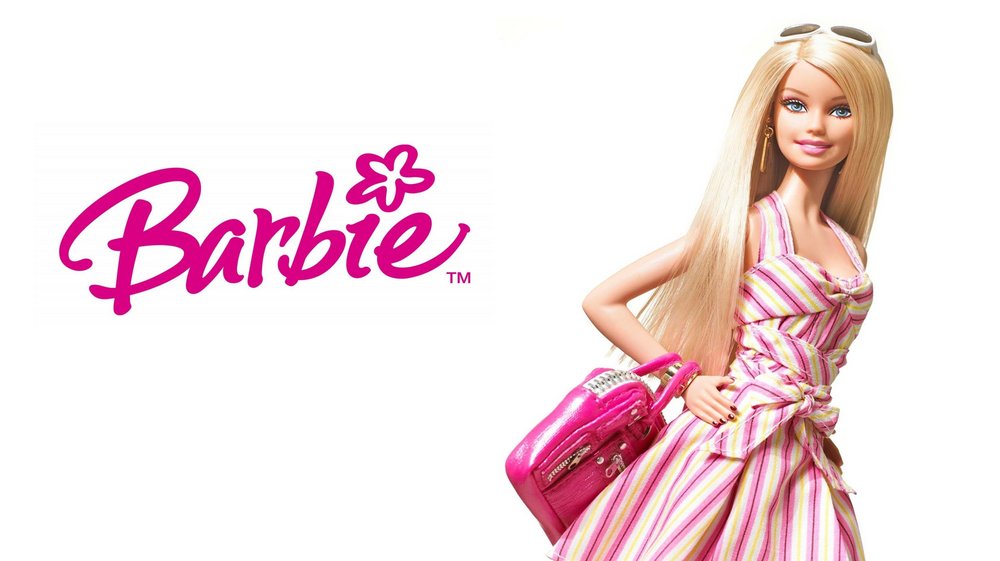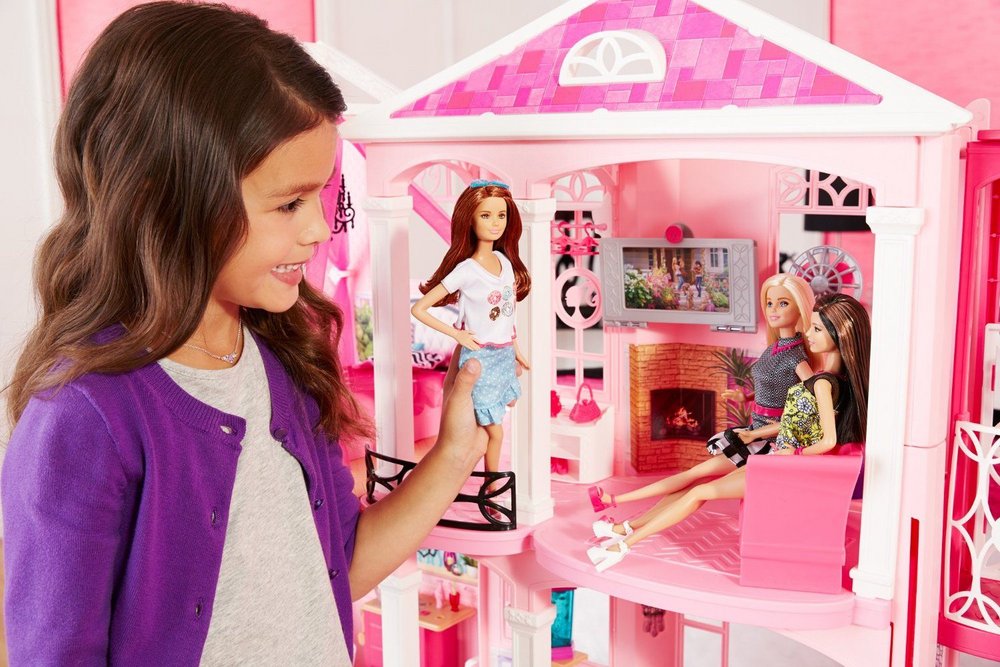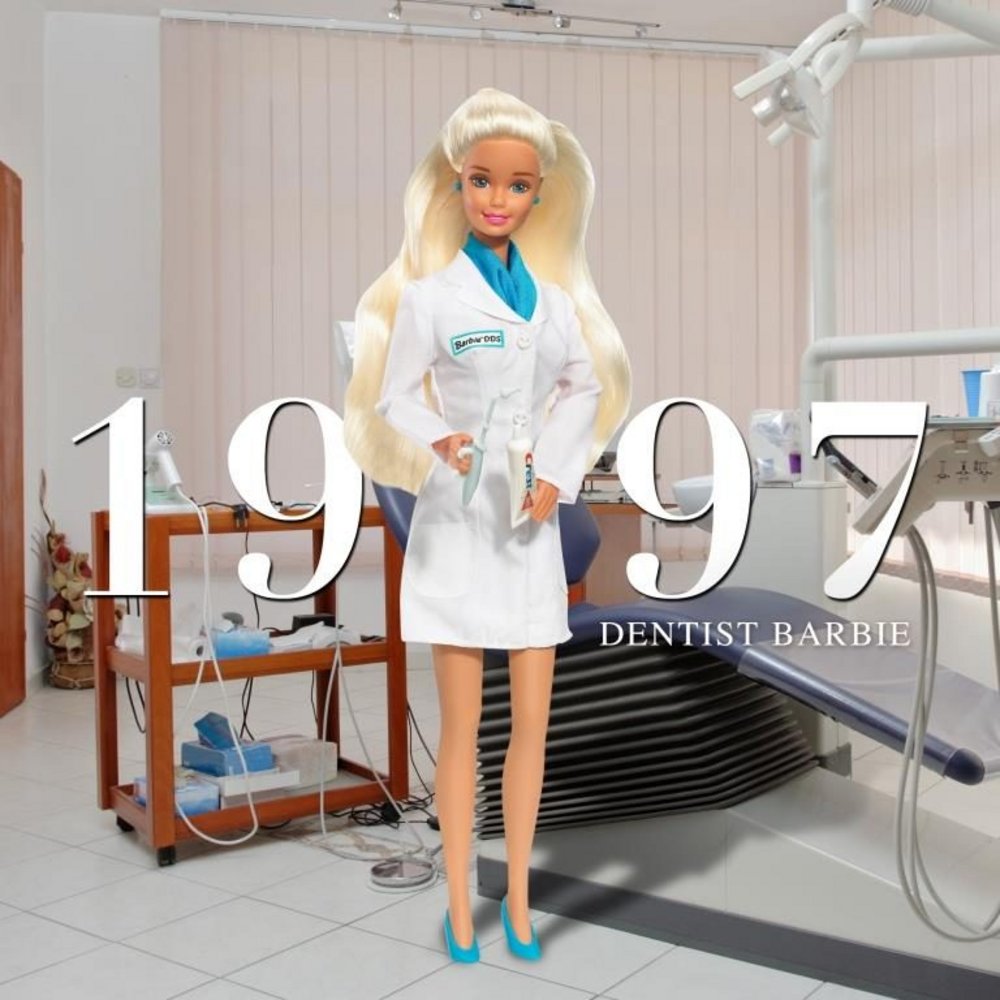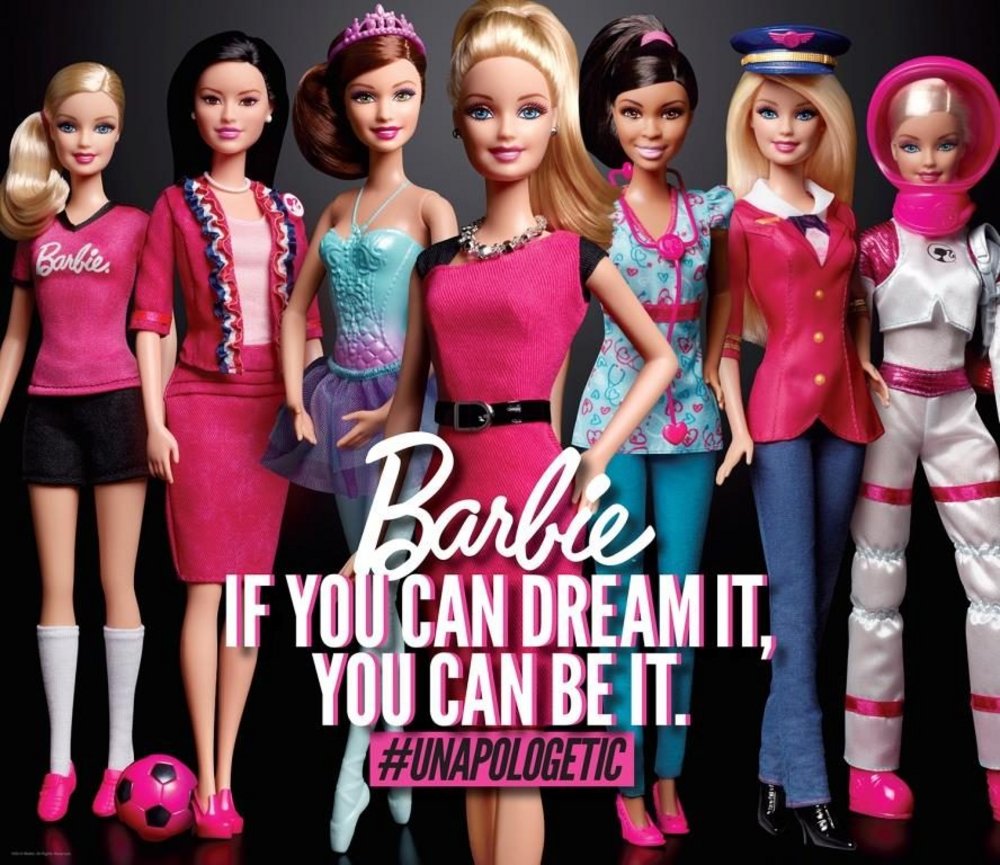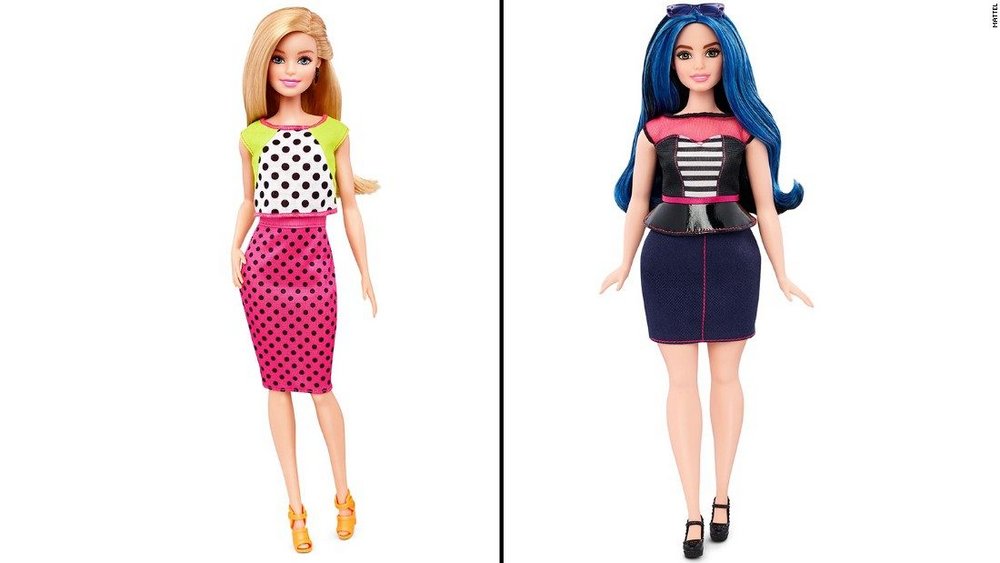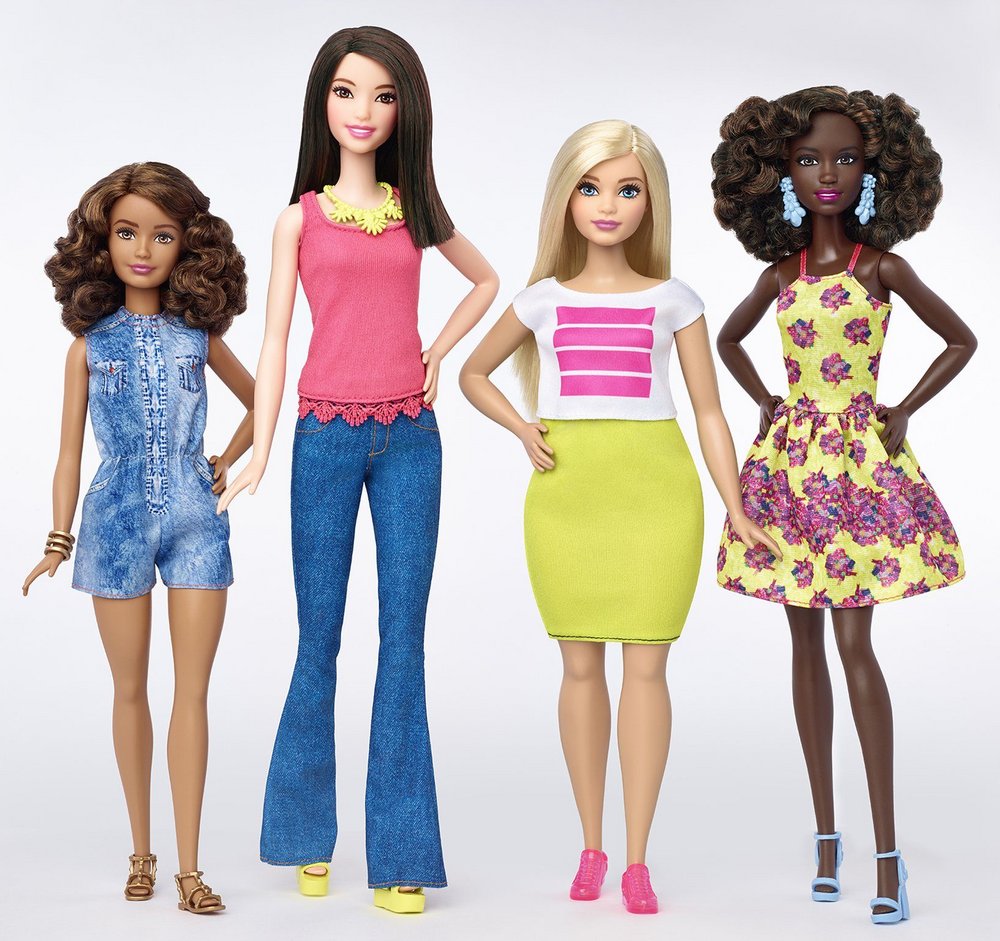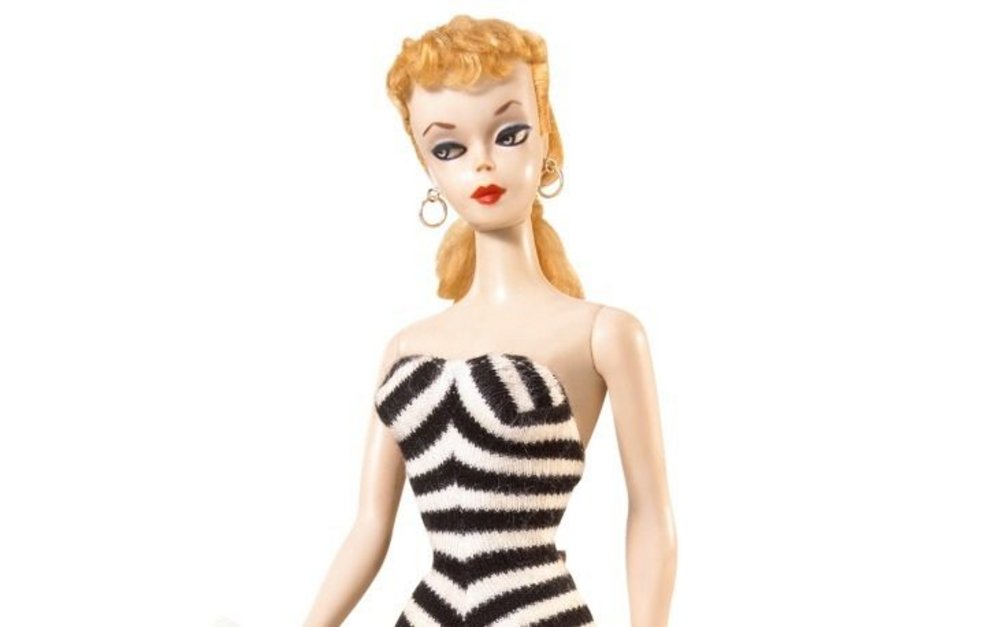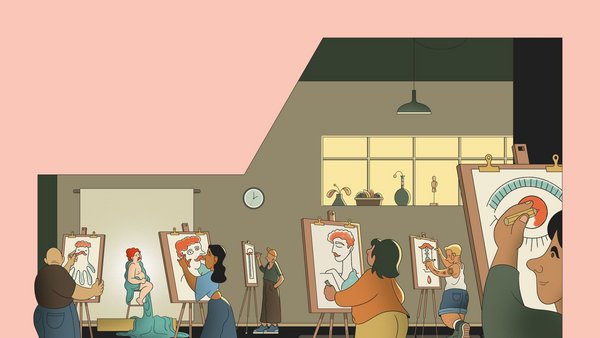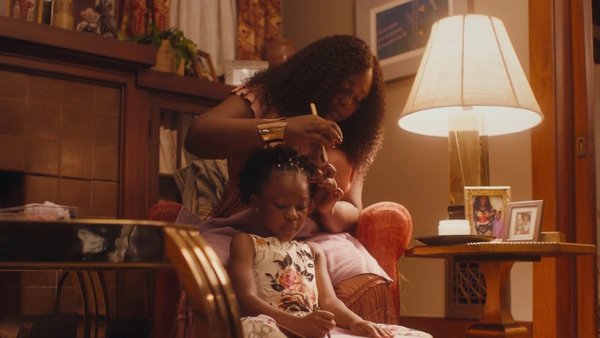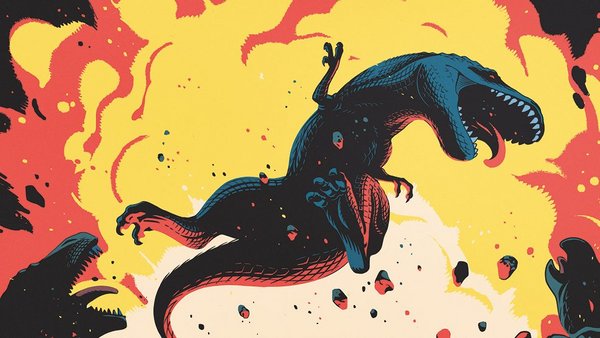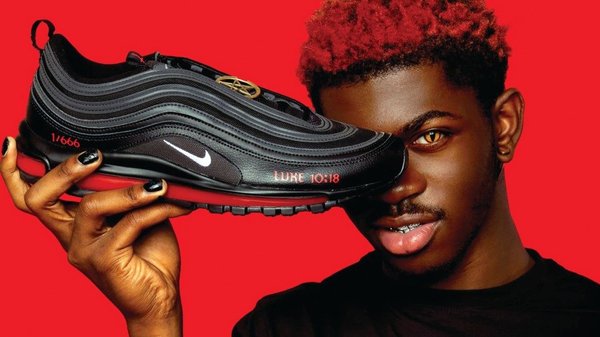Blonde Ambition /
The world’s most famous doll was in dire need of a makeover. Though Barbie still consistently brought in more than $1bn in annual sales for Mattel, she was starting to lose her cachet among a new generation of parents. So the toymaker set out to demonstrate the doll’s relevance by embracing female empowerment and diversity, proving that Barbie is more than just a pretty plaything.
Barbara Millicent Roberts should be the poster girl for female empowerment. Since her first appearance in 1959, the 11.5-inch doll – better known as Barbie – has been a doctor and a rock star, a pilot and a police officer. In fact, she’s had more than 180 different jobs and has broken through the plastic ceiling more than once. In 1965, she travelled into space, four years before Neil Armstrong set foot on the moon. And she first ran for president in 1992, before Hillary Clinton was even first lady, let alone on the ballot as a candidate.
Millennial Malaise
Over the past few years the doll’s sales have steadily declined, and from 2012 to 2014, they decreased by 20%. ‘Barbie was faltering as a brand,’ says Jim Silver, editor of toy review site TTPM. ‘She was struggling in the marketplace.’ Mattel could not ignore this lack of interest in its most important brand, which Silver estimates makes up 15% of its business.
The American toymaker commissioned a sentiment analysis study and found that an emerging segment of young mothers did not have positive feelings about Barbie. ‘We weren’t hearing the emotional connection to the brand,’ explains Michael Shore, Mattel VP of consumer insights. ‘These moms said, “The brand isn’t reflecting the world my kids are growing up in, it isn’t reflecting diversity, the values of what I want as a parent.”’
In contrast to earlier generations, the millennial mother is much more focused on what her children are consuming, says Matt Miller, executive creative director at Mattel’s advertising agency, BBDO San Francisco. ‘That meant she was a roadblock, she was not allowing her daughter to play with Barbie. A lot of moms were ok with Barbie, but they would never give her as a gift at a birthday party. That says more about the way that the doll was seen in culture, than what the moms thought about Barbie.’
Barbie is like Coca-Cola. She’s this American icon, and with legendary status comes incredible responsibility.
Robert Best, Mattel
‘Few women are as well known as Barbie, so it’s easy for her to become a target,’ adds Miller. ‘Barbie unjustly becomes a symbol for a lot of issues of female empowerment and female body types.’ ‘People feel deep emotions about this thing,’ explains Robert Best, Barbie senior designer. ‘Barbie is like Coca-Cola. She’s this American icon, and with legendary status comes incredible responsibility. That is the reason the conversation around her gets so heated and passionate.’
The doll has been accused of glamourising an unrealistically thin body type and positioning blonde hair, blue eyes and big boobs as the ultimate in feminine beauty. Parents worried that Barbie symbolised an unhealthy focus on aesthetics.
‘We cannot place all of the blame for the beauty ideal problems we have in Western society on Mattel,’ says Rebecca Hains, a children’s media culture expert and professor at Salem State University. ‘However, they’ve had such longevity and popularity, that they do have some responsibility. They are reinforcing and reinscribing this particular beauty ideal.’
Barbie has been a lightning rod for women’s issues since her creation 57 years ago and had always managed to retain her popularity. But suddenly it felt as if Barbie’s critics could no longer be ignored. Awareness was not an issue. Parents thought they knew all about Barbie, but they didn’t know why they should buy one for their daughters. Even though only a small percentage of mothers were anti-Barbie, Mattel felt it was enough to threaten her popularity. ‘Ten years ago, if you had a majority perspective around your brand, then a minority perspective didn’t really have a platform to become contagious and viral,’ explains Shore. ‘But with the explosion of social media, the minority voice can gain traction and alter perception, both among our target audience and society. We saw it happen quickly.'
As our core consumer gets younger, the role that parent communication plays is increasingly important. That’s why it was a critical time for us to shift the target towards parents.’
Kristina Duncan, Mattel
Mother knows best
Age compression of the brand’s audience was another reason that it became even more important for Mattel to endear the doll to parents. ‘Barbie was made for ages three to 10,’ says Silver. ‘But kids were growing up faster. Ten-years-olds for the most part had stopped playing with dolls and seven-, eight- and nine-year-olds didn’t want to play with the same thing that five-year-olds were playing with.’ For years, Mattel had advertised Barbie to children, focusing on all the fun activities you could do with the doll, but now that the girls playing with Barbie were younger, they had less influence on what toys their parents bought them. Kristina Duncan, VP of marketing communication, says: ‘As our core consumer gets younger, the role that parent communication plays is increasingly important. That’s why it was a critical time for us to shift the target towards parents.’
Repeating history
To convince parents that Barbie was about more than looks, Mattel turned back to the doll’s maker, Ruth Handler, and the intent behind her creation. ‘Her thinking behind the introduction of Barbie was to give girls a platform to imagine a world of possibilities and for Barbie to spark imagination and be a device for role-playing real-life situations,’ says Lisa McKnight, general manager and SVP of Barbie Global. Barbie’s October 2015 marketing campaign, created with BBDO, was inspired by a Handler quote summarising the brand’s purposefulness: ‘My whole philosophy of Barbie was that, through the doll, the girl could be anything she wanted to be. Barbie always represented the fact that a woman has choices.’ Mattel simply needed to articulate that purpose in a way that would resonate with today’s mothers.
Invisible Imagination
The toymaker believed that parents would see the value of the brand if they watched their daughters play with Barbie. This hypothesis was informed by a 2014 Mattel experiment called The Barbie Project that documented girls playing with the doll and their parents’ reactions. ‘We wanted to make sure we communicated that the benefit of Barbie lies not within the doll but within the imagination of the child who plays with her,’ explains Duncan.
The problem is that imaginative play doesn’t necessarily have a creative outcome that parents can see. ‘Compare it to arts and crafts,’ says Shore. ‘If a child is drawing a picture, they can share it with their parents, it’s a benefit that’s tangible and immediate. Often if a child is engaging with the doll on her own, you don’t hear anything, it’s happening in her head.’ To make that pretend play visible, Mattel created an online spot called Imagine the Possibilities. In the hidden-camera film, little girls role-play different jobs to the surprise and delight of the adults around them, for example, pretending to be a professor in a real-life university classroom and tending to animals in a veterinarian’s clinic.
The film formed part of a wider campaign called You Can Be Anything, centred on Mattel’s belief that ‘When a girl plays with Barbie, she imagines everything she can become.’ On Instagram, Mattel celebrated Throwback Thursdays with a retrospective of Barbie’s previous careers. For Makeunder Mondays, the brand shared images of dolls with messy hair and covered in crayon marks, depicting how girls truly play with Barbie. ‘Often people think of Barbie as a brand that stands for perfection and beauty,’ says Duncan. ‘But really when you see a Barbie doll that’s been played with, she’s a souvenir of incredible adventures and imaginative journeys.’
The results for the campaign were impressive. The video received more than 50 million views and the campaign received 145 million impressions, with 500,000 engagements on Facebook and Twitter. Most importantly, it resonated with the target audience, with Mattel reporting that 81% of mothers of girls aged two to 10 responded positively to the campaign.
My whole philosophy of Barbie was that, through the doll, the girl could be anything she wanted to be. Barbie always represented the fact that a woman has choices
Ruth Handler, Mattel
‘We saw a significant lift in perceptions in the brand and that corresponded with a lift in sales,’ says Shore. ‘Especially with moms of younger girls, who were really critical, we started to see dramatic shifts in what they viewed as the benefits of the brand and their emotional connection to the brand: it was a brand that was more diverse, more reflective of the values that they held dear.’
Timely and timeless
Imagine the Possibilities showed parents that Barbie could be modern. ‘This is a brand that’s got 57 years of legacy, but to stay relevant needs to continue to evolve,’ says Barbie Global’s McKnight. ‘We had become a little stagnant.’
The average lifespan of a toy on the market is three to five years, but Barbie has endured for almost six decades. While the brand had lost its way somewhat in recent years, it owes its longevity to the fact that it has constantly reinvented itself. As Barbie senior designer Best says: ‘In the 70s, it was all about beach style, so Malibu Barbie came out. In the 60s, Barbie looked more like Twiggy or Jean Shrimpton. She always related to culture.’ Michelle Chidoni, VP of global brand communications at Mattel, agrees: ‘Barbie is a mini time-capsule for what’s relevant in that age.’
Barbie’s careers are another indication of how the doll moves with the times. Since 2011, Mattel has brought out an annual Career of the Year doll, giving Barbie a job under-represented by women – from entrepreneur to film director. The Careers line is a tangible representation of Barbie’s You Can Be Anything messaging. This positioning comes through in the language on the packaging, as well as the doll itself. For example, for the 2016 Career of the Year doll, a game developer, the box emphasises what’s required to do this job, including soft skills such as teamwork.
The 2016 version of President Barbie is perhaps the best articulation of the brand’s evolution. The two-pack, all-female running ticket of President and Vice-President Barbie comes with education tools to encourage girls to explore leadership opportunities, designed in partnership with NGO She Should Run. To promote the dolls, Mattel created an online film featuring girls talking about what they would do as president. The spot has had more than 1.6 million YouTube views since July and Mattel reports a 96% positive response.
Bye bye Blondie
One of the most remarkable aspects of the new President Barbie doll is that she doesn’t necessarily fit the blue-eyed, blonde-haired mould of classic Barbie. In fact, President and Vice-President Barbie come in a variety of skin tones and hair colours. This follows Mattel’s expansion of the Barbie Fashionistas line in 2015, when it added 23 new dolls with different looks, (as well as flat feet, making Barbie heels optional for the first time). Jim Silver believes this racial diversity answers a grave problem with the product. ‘When you went into stores and looked for Barbie, you found nothing but Caucasian dolls. In the US, the market is around 35% non-Caucasian. The lack of diversity really hurt them.’ He cites the racial ambiguity of Mattel’s Monster High figures, with their pink- and blue hued skin, as one reason the alternative doll line was so successful.
Body-building
With its 2016 Fashionistas, Mattel made it easier for girls to find a doll that looked just like them and, crucially, made Barbie inclusive and relevant in a 21st-century, multicultural world. The 33 new models come with 30 possible hair colours, 24 hair styles, 22 eye colours, 14 face sculpts and seven skin tones. But most striking of all, girls have the option of playing with a Barbie with a little more meat on her. After years of being criticised for promoting an unhealthy body image, the doll finally has a fuller figure. Now, Barbie is available in a ‘curvy’, as well as a ‘tall’, ‘petite’ and ‘original’ body type. Since January, visitors to Mattel’s online store have been able to buy a curvy Barbie with blue hair, or a petite Barbie with ebony skin and an edgy updo.
The three new shapes are a result of Barbie Design VP Kim Culmone asking her team what they would do if they could create Barbie from scratch. As with the You Can Be Anything marketing, the body and racial diversity was a way to increase Barbie’s relevance with a new generation of parents. ‘Listening to moms and society is important to us,’ explains Culmone. ‘As product designers, we’re not creating fine art, we’re problem-solving and delivering something to the world that should resonate from an emotional connection standpoint. We were seeing that we weren’t connecting.’
This wasn’t the first time that the brand had explored alternative body types, but Culmone says that it had never had such a resoundingly positive response before: ‘That let us know that mass culture was ready for this.’
We really do believe that having more diversity in your line, having a product line that’s more reflective of what girls see around them is good for business.
Lisa McKnight, Mattel
Redesigning Barbie’s body was no easy feat. Mattel was reinventing its core fashion doll line, which had the highest penetration, and adding serious complications to the doll’s universe. ‘Everything has to be rethought to make sure it accommodates all of the new bodies,’ explains Best. After all, this is a doll with accessories ranging from cars to castles. ‘We would be exploding that system, throwing a wrench into something that had been operating in a very simple way.’ The designers had to ask questions such as ‘Does the tall body fit in Barbie’s bed without looking like she’s hanging off?’
But Mattel believed the change was worth it. ‘This is what the world looks like and if we as a brand want to continue to be a positive influence, this is a natural evolution,’ says Best. ‘It was interesting to hear people say, when we launched the 2016 dolls: “Now there’s a doll that looks like me.” That’s a powerful sentiment. People want to feel represented, both in media and in culture.’
Best adds that for a long time Mattel’s defence for not changing Barbie was to say that people were getting too wound up about a plaything, but at the same time the doll embodies a real girl. ‘She’s not a character like Mickey Mouse,’ he explains. ‘People aren’t calling Mickey out on body-shaming issues, because he’s a mouse.’ The different body types had a powerful PR impact, with Mattel reporting that the launch garnered 5.6 billion impressions (a figure on par with the Olympics), 5,000 media stories and 97% positive sentiment. ‘Moms who felt Barbie was not a role model backed off,’ says Silver. ‘It shows that she has truly again become an inspiration to girls.’
But the Fashionista revamp was more than just a messaging play. ‘It was also a business decision,’ says Sejal Shah, Barbie VP of marketing. ‘A key objective was to see lift in sales.’ She reports that the product line saw ‘significant point-of sale momentum in the double digits’ globally. Moreover, the overall brand was up in high single digits. ‘We really do believe that having more diversity in your line, having a product line that’s more reflective of what girls see around them is good for business,’ adds McKnight.
Despite the success of Fashionistas, not everyone thinks Mattel has gone far enough. Salem State University’s Hains believes the new body diversity is ‘a step in the right direction’, but adds that, ‘at the same time it’s limited to one line. It’s not necessarily targeting the youngest girls, who are in some ways the most vulnerable to internalising rigid and exaggerated beauty ideals.’
Shah’s response is that Mattel will be rolling out diversity across different lines, starting with new bodies for Careers in 2017. She also hints that diversity will be expressed in the dolls in ways other than body shape or ethnicity: ‘You’ll see different expressions – a shaved head, a gap in her teeth.’
And in November, plus-size model Ashley Graham will be immortalised in the Sheroes collection, joining other celebrity role models such as singer Zendaya and film director Ava DuVernay.
Guys and dolls
Barbie is not only making its toys more inclusive, it is also becoming more inclusive in the targeting of its audience. In October 2015, Mattel featured a boy in an online video for a collectible Moschino Barbie, and VP of marketing communication Duncan says the brand will continue to put boys in its spots. ‘We often hear that boys and girls alike figure out what they want to be when they grow up by playing with Barbie,’ she says. ‘Being more diverse and inclusive is something that this brand believes in through to the core.’
From next year, Barbie will be reaching out to dads too. ‘We’ve been focusing a lot on mum, but we want to open up the conversation,’ says McKnight. She cites research that shows girls who have a father or father figure in their formative years have more confidence when they’re older.
But another reason for this shift is that households today have a different makeup, with stay-at-home, single or two-dad homes becoming more common.
And the brand is even planning to include more men among its advisers, recognising that role models for girls don’t have to be women. Barbie’s Global Advisory Council was previously made up of female experts from various industries and backgrounds, like ballerina Misty Copeland and Birchbox founder Katia Beauchamp, but now Barbie is inviting men into its team to ensure a wider range of opinions on where the brand can go.
From dolls to domination
The combination of an empowering marketing message, backed by products bringing this message to life, has helped Barbie have much more resonance as a brand. This has had a significant impact on Mattel’s business, with Barbie’s worldwide sales increasing 16% in the third quarter of the year. The firm’s operating profit for the quarter rose to $317.4m compared with $300.8m the previous year.
But for Mattel, the brand is about more than dolls. Already, the Barbie brand spans 45 categories, from apparel to bedding to bikes, and the company believes that by looking past the toy shelf, it can fight that crucial age-compression problem. ‘We want to extend the brand beyond toy play and really evolve it into a true lifestyle brand,’ says McKnight. ‘Ultimately, we don’t want consumers to just buy our products, we want them to buy into the brand. We absolutely believe that we can extend the longevity and the lifecycle of the brand by moving beyond the toy category.’
That’s only one of Mattel’s goals. More significantly, it is determined to cement Barbie as a social-expression brand and do more to enable the limitless potential of girls. ‘We had to start with stating our purpose, defining it, communicating it,’ says McKnight. ‘When we look to next year and beyond, we want to start living our purpose.’ That will involve, for example, partnering with organisations that promote women in leadership roles.
Mattel’s objective to inspire girls everywhere to be anything that they want truly is a big, blonde ambition, but Mattel believes it has the right woman to do the job. ‘We believe that Barbie is an amazing platform for girl empowerment and for the advancement of girls.’
Box out: Barbie’s beginnings
Ruth Handler’s inspiration for Barbie came from watching her young daughter Barbara play with paper dolls, imagining stories and careers for the figures.
Recognising a gap in the market, Handler decided to create a three-dimensional adult doll that young girls could not only dress up, but also use to imagine their future lives. Her shape was modelled after a busty German comic book character and doll called Lilli, putting her in stark contrast to the baby doll toys popular at the time.
Handler believed that her product could encourage girls to be anything they wanted to be and in many ways she herself represented how women could push boundaries. As Michelle Chidoni, VP of global brand communications at Mattel, says: ‘She was a trailblazer: a career women and an entrepreneur in the 1960s. She was driving a business in a male-dominated industry.’ When Handler presented the Barbie doll at the annual Toy Fair in New York in 1959, attendees were aghast at the thought of a doll with breasts. ‘She was basically laughed off the stage when she introduced Barbie to a room full of male buyers,’ says Chidoni. ‘They thought it was ridiculous that anyone would buy a doll that represented the female figure.’
But Handler had the last laugh. Despite the apprehension from buyers, Mattel, the toy company Handler founded with her husband Elliot, went on to sell 300,000 Barbie dolls in its first year.
Box out: Tech toys
One way Mattel is reimagining Barbie for the modern age is by embedding tech into the doll and her accessories.
Last year, the company made little girls’ dreams come true by creating an artificial intelligence doll that could finally talk back. Hello Barbie, made with conversation software company PullString, uses wifi and speech recognition to have a two-way dialogue with users. Children simply press her belt buckle and she starts chatting away. She asks a child questions and can even remember their responses, making kids feel like they really have a friend in the doll.
This Christmas, it’s not just Barbie who will be AI-enabled, but her house too. While mums and dads might be playing around with their Nest Thermostats and Philips Hue lights, for $299.99 children can have way more fun with the Hello Dreamhouse. The miniature mansion, also created with PullString, works using voice-recognition, so kids simply command Hello Dreamhouse to turn the stairs into a slide or make the chandelier spin. ‘Since kids are seeing internet-connected things in the home today, they realise it’s fun for them to play with too,’ says Oren Jacob, co-founder and CEO of PullString. ‘The play world and the real world echo each other.’
Hello Dreamhouse is not the only tech toy that Mattel is pinning its hopes on this holiday season. It has also launched a flying toy that kids navigate via remote control to make Barbie look as if she’s soaring on a hoverboard.
Want more of the same? /
Become a member and you'll not just read this article but discover thousands more world-class campaigns, deep dives on brands and cutting-edge trends.
Membership includes open access to Contagious IQ, our intelligence platform that deconstructs the most creative, effective and innovative marketing ideas from around the globe, as well as exclusive briefings, webinars and training courses. Get a demo here.
Want more of the same? /
We don’t just write about best-in-class campaigns, interviews and trends. Our Members also receive access to briefings, online training, webinars, live events and much more.
